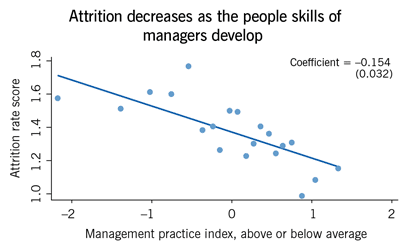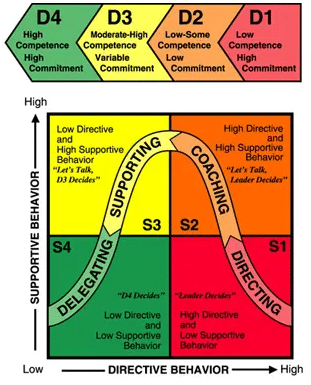Want to Reduce Staff Turnover? Here’s how.
Replacing people who leave voluntarily is expensive so staff retention should be every manager’s goal, especially in this current talent-short market. Research by Gallup Poll [1],conservatively estimated that the cost of replacing an individual employee can range from half to two times an employee’s annual salary. The startling finding of the same research was that…
Replacing people who leave voluntarily is expensive so staff retention should be every manager’s goal, especially in this current talent-short market. Research by Gallup Poll [1],conservatively estimated that the cost of replacing an individual employee can range from half to two times an employee’s annual salary. The startling finding of the same research was that 50% of voluntarily exiting employees said that their manager or organisation could have done something to prevent them from leaving their job. One of the major contributors to personnel leaving is the quality of leadership they experienced. How many times have you heard someone say that they reported to a micro-manager and found it intolerable? Or there’s the alternate story of encountering a workplace culture where there was no on-boarding, no assessment of what skills gap there may be and what training may be required. Essentially, being thrown in the deep end.
It has been shown that there is a reverse linear relationship between quality of leadership and employee attrition rate [2].

The good news is that there is a solution. Leadership can be taught and can assist in reducing staff turnover. Fortunately, there are some excellent leadership training programs available to choose from. Many of these programs incorporate a model developed in the 1970’s, termed as Situational Leadership [3]. The concept is based upon the finding that the leadership style needed to be adopted by a leader will depend on the capability, or skill of the follower (Task Readiness) and their willingness (Psychological Readiness) to perform the task. A leader’s relationship with followers is therefore likely to go through different stages as these abilities and willingness will change over time as confidence and skills improve.
Four leadership categories (Directing, Coaching, Supporting and Delegating) provide appropriate leadership styles to adopt based on the stage that a follower is at.
Directing involves giving detailed instructions on how to complete a task/job and is appropriate where someone is neither appropriately skilled nor confident in undertaking a task.
Coaching involves providing encouragement and personal support that a follower needs to complete the task and is appropriate where a follower is in the early stages of learning a task.
Supporting is appropriate when skills and confidence are at a level where the follower just requires monitoring.
Delegating is a stage which acknowledges that the follower is both adequately skilled and confident to undertake a task without the involvement of the leader.
If applied correctly, this simple model is a powerful tool that overcomes the adverse employee response associated with micro-management, or the equally demoralising effect of providing insufficient training and/or support. The result will be happier employees and reduced staff turnover.
Diagrammatic representation of the Situational Leadership Styles [4]

Citations
[1] https://www.gallup.com/workplace/247391/fixable-problem-costs-businesses-trillion.aspx
[2] Hoffman H and Tadelis S (2018) People Management Skills, Employee Attrition and Manager Rewards: An empirical Analysis. http://www.nber.org/papers/w24360
[3] Hersey,P and Blanchard, K (1977) Management of Organisational Behaviour: Utilising Human Resources. New Jersey/Prentice Hall.
[4] Lars De Brun (March 2020) Hersey and Blanchard Situational Leadership Model: Adapting the Leadership Style to the Follower.
The Latest Updates
Let’s look at the current trends in job demand and talent availability in the agriculture and agribusiness sector in Australia over the second half of 2023 and the first quarter of 2024. There was a weakening of job demand in this sector but a slight improvement in candidate availability and job interest during this period….
In times past, people’s working lives often played out over many years at one company, but now the world has vastly changed. These days it is common to shift between jobs and organisations, but this practice raises questions as to what is today considered the Goldilocks time to spend in a job? How often do…
Employee retention matters. Organisational issues such as training time and investment, lost knowledge, mourning, insecure co-workers and a costly candidate search aside; failing to retain a key employee is costly. Various estimates suggest that losing a middle manager costs an organisation up to 100 percent of their salary. The loss of a senior executive is…











